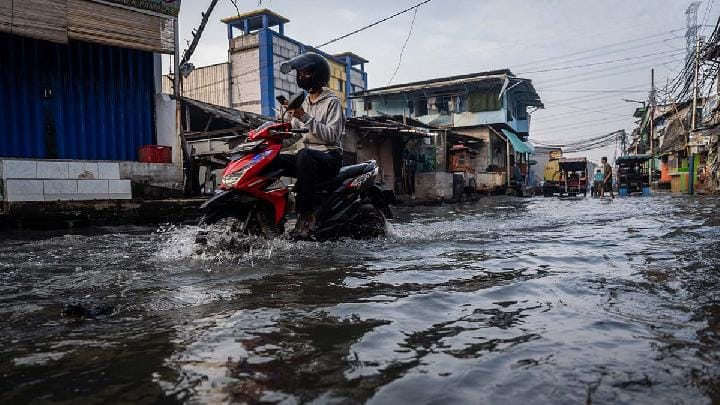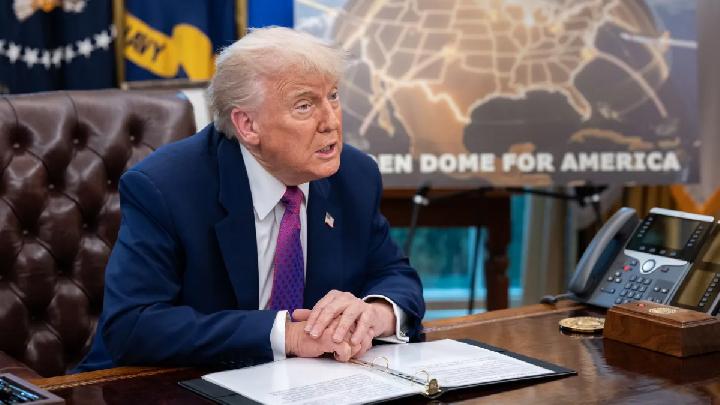TEMPO.CO, Jakarta - Lakes are vital to Earth’s environmental balance, serving as essential sources of freshwater and supporting biodiversity and ecosystems. Spread across the globe, several nations, with Canada leading, are blessed with an exceptional number of lakes.
Having nearly 879,800 lakes, Canada holds the distinction as the country with the most lakes in the world. But the Land of the Maple Leaf isn’t alone in its aquatic wealth, with nations like Russia, the United States, and China also featuring thousands of lakes that shape their landscapes and ecosystems.
Drawing insights from Jagran Josh and World Atlas, this article uncovers the top 10 countries with the most lakes globally.
What Country Has the Most Lakes?
1. Canada - 879,800
Taking the top spot, Canada is the country with the most lakes worldwide. Home to nearly 879,800 lakes, many of which were carved out by glaciers that melted thousands of years ago due to global warming. Though their origin is tied to past climate shifts, these lakes now play a vital role in regulating Canada's water cycle.
2. Russia - 201,200
With an estimated figure of 201,200 lakes in total, Russia claims second place on the global ranking. These lakes are largely found in cold regions like Siberia, playing a major role in supporting biodiversity and hydrological systems across the areas.
Among the many, Lake Baikal is particularly renowned for being the world’s deepest and oldest freshwater lake, containing almost 20% of the planet’s unfrozen freshwater reserve.
3. USA - 102,500
The vast United States is home to approximately 102,500 lakes. Among them are some of the largest lakes in the world, including the iconic Great Lakes which comprise Superior, Michigan, Huron, Erie, and Ontario. Formed primarily through glacial activity, these lakes are now used for a wide variety of purposes, including boating and fishing.
4. China - 23,800
China ranks as the fourth country with the most lakes, home to around 23,800 recorded bodies of water. A significant number of these are found on the Tibetan Plateau, categorized into two main types: tectonic and glacial. These lakes play a crucial role in regional water storage and distribution, supporting major river systems and contributing to the broader water cycle across Asia.
5. Sweden - 22,600
Sweden is home to 22,600 lakes, many of which are formed by glaciers. These lakes are deeply woven into the nation’s life, serving as a popular spot for boating, fishing, and outdoor recreation. Noteworthy examples include Lake Vänern, Europe’s third-largest lake, and Lake Vättern, both admired for their size, clarity, and scenic surroundings.
6. Brazil - 20,900
With over 20,000 lakes, many of Brazil’s water bodies are nestled within the Amazon region. In addition to natural lakes, the country also features several man-made reservoirs, such as the Sobradinho Reservoir. Both types of lakes play a vital role in supporting Brazil’s ecosystems, contributing to biodiversity, water regulation, and local livelihoods.
7. Norway - 20,000
Another European entry is Norway, home to about 20,000 lakes. Famously known for their tranquility, a lot of Norway lakes are nestled between fjords and mountains, offering unmatched tranquility. Norway’s freshwater lakes are commonly used for recreation and hydroelectric power generation.
8. Argentina - 13,600
Argentina is the eighth country with the most lakes, totaling around 13,600. Most of these are concentrated near the Andes mountains and were formed by glaciers. Lakes such as Lago Argentino and Lago Nahuel Huapi are not only scenic attractions but also play important roles in the nation’s life, particularly in fishing and tourism.
9. Kazakhstan - 12,400
Kazakhstan has roughly 12,400 lakes, many located in its northern part. One of the most significant is Lake Balkhash, notable for containing both freshwater and saline sections, as well as for having no outlet to the sea. The lakes in Kazakhstan are vital for providing drinking water and supporting agriculture across the region.
10. Australia - 11,400
Australia rounds out the top 10 with about 11,400 lakes. Many of these lakes are ephemeral, meaning they only appear during the rainy season and drying out during droughts. The country’s largest lake, Lake Eyre, often lies dry for years but becomes a massive inland sea during floods.
From the glacier-carved lakes of Canada and Sweden to the seasonal basins of Australia and Brazil, these lakes not only shape landscapes and ecosystems but also sustain human life and environmental balance on a global scale. For a similar discovery, let’s take a look at the world’s clearest rivers.
Editor’s Choice: 10 Most Beautiful Lakes in the World: A Guide for Nature Lovers
Click here to get the latest news updates from Tempo on Google News
































:strip_icc():format(jpeg)/kly-media-production/medias/5085399/original/084283500_1736394404-caption-buka-puasa-bersama.jpg)


:strip_icc():format(jpeg)/kly-media-production/medias/4990580/original/032364700_1730716355-cara-sholat-hajat.jpg)








:strip_icc():format(jpeg)/kly-media-production/medias/4878837/original/035738800_1719663872-WhatsApp_Image_2024-06-28_at_23.09.07__1_.jpeg)



:strip_icc():format(jpeg)/kly-media-production/medias/4857959/original/025768200_1717923099-WhatsApp_Image_2024-06-08_at_22.48.35.jpeg)
:strip_icc():format(jpeg)/kly-media-production/medias/4955547/original/083974700_1727529526-GYkI1PIbkAA6R9v.jpg)
